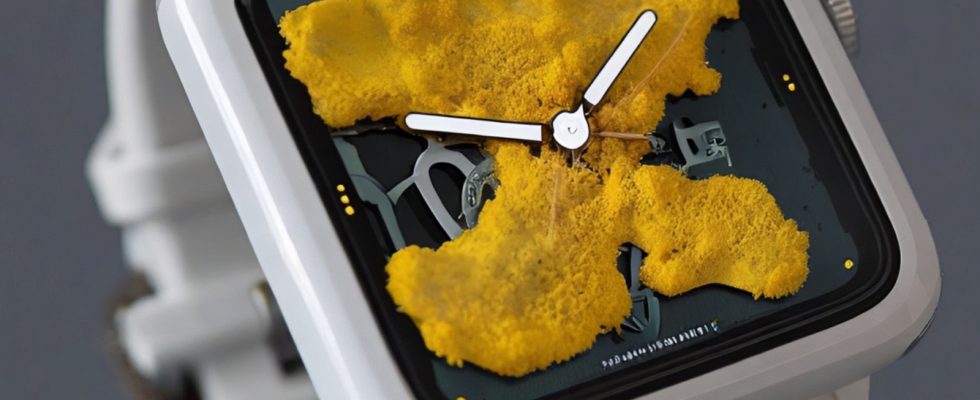While technology is constantly evolving with a range of devices that make our lives easier, a recent study conducted at the University of Chicago goes far beyond this evolution, showing the emergence of a living device that interacts with users.
Based on electrically conductive slime mold, this smartwatch works with an organism called Physarum polycephalum, offering a unique feature that is only activated when maintained. Unlike traditional devices, this live clock not only shows its users the time, but also requires them to interact with it and maintain it regularly.
Technology that changes consumption habits
Nowadays, technological devices such as mobile phones and smart watches have become an indispensable part of our lives. However, when these devices break or new models are introduced, many people throw away or replace their old devices without thinking. This situation causes the 40 million tons of electronic waste produced every year to increase rapidly.

Researchers working at the Human-Computer Integration Laboratory at the University of Chicago aim to change these consumption habits. Student Jasmine Lu and assistant professor Pedro Lopes managed to develop this smartwatch using slime mold, a living organism. This watch requires active attention from the user.
What is slime mold?
Slime mold is a single-celled organism called Physarum polycephalum. This organism lives in tropical regions and environments where decomposed plant material is present. It consists of a cluster of cells that are usually translucent and yellow in color.


He has the ability to react to the environment around him and can solve complex maze-like structures. Additionally, since it has electrically conductive properties, it is used in various experiments in science and research.
You need to feed your slime mold clock
The clock contains the slime mold Physarum polycephalum. In order for this organism to run the clock, it needs to be fed regularly with a mixture of water and oats. When the slime mold passes through the enclosure, it creates an electrical circuit, activating the heart rate monitor. Additionally, if the organism is not fed, it can go into sleep mode and remain alive for a long time.


To test the clock, researchers conducted a two-week study with five participants. During the first week, users fed the organism to activate the slime mold’s heart rate monitoring feature. In the second week, the researchers asked the participants to stop feeding the organism, causing the clock to dry out. As a result of the study, participants stated that they developed a high level of attachment to the watch and treated it like a pet.
Inspiration for designers: A more humane approach to technology
Researchers hope this inventive slime mold-powered device will inspire designers to create technologies that create commitment and mutual benefit. However, ensuring that devices are cared for rather than simply consumed should be an important element of the design. This approach can be made possible by making devices feel like partners, not disposable tools.
So what are your thoughts about this technology? You can express your thoughts in the comments.

